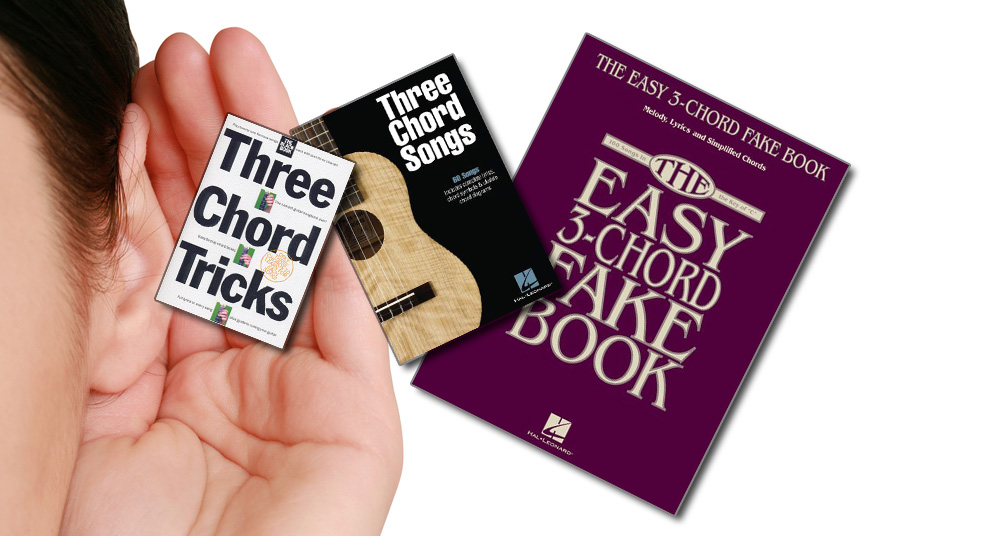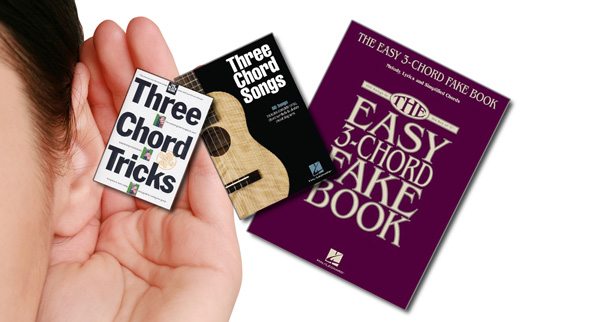Thousands of pop and rock songs rely on just three or four chords and chord progression ear training teaches you to play these chords by ear. It’s easy to see why you should learn the popular I-IV-V chord progressions but the question remains:
How do we begin?
And what ear training exercises are there for chord progressions?
Learning to play by ear requires listening. Not the kind of listening where you have music on in the background while you’re running around popping laundry into the dryer and checking email and such. You need to set aside some time for some focused active listening.

How to practice hearing I-IV-V progressions
When listening for a I-IV-V progression, the easiest place to start is with your voice. Here’s the quick reason why: the voice is your first instrument, or at least it should be when you’re learning to play by ear. It has the strongest association with your ear and ability to understand what you hear.
Using your voice is simply a must when training your ears, to hear everything from chord progressions to the difference between good and bad notes within a harmonic context.
So what should you listen for when it comes to I-IV-V? Start by finding a way to sing it that’s consistent. Name each note of a scale 1-8 so you can literally sing the first, fourth, and fifth notes, making it easier to hear the one, four, and five.
Hearing a chord progression is all about hearing the root note of the chord (usually found in the bass line). This means we can use our interval ear training (recognising perfect fourths and perfect fifths) to develop our chord progression skills.
Here are a few ear training exercises to help you sing and hear the intervals necessary to recognize a 1-4-5 progression:
Exercise 1: Gettin’ Hitched
Sing the tune “Here Comes The Bride” or play a recording of the song. Here’s one you can listen to.
The interval between “here” and “come” is a 4th, or 1-4. Once you get the hang of that , turn the tune off and sing “1, 4, 4, 4” instead of the actual words to the song. Then repeat the interval “1-4, 1-4, 1-4” a few times.
You now know how to sing the first interval of a 1-4-5 progression. After singing it, see if you can replicate the notes in your head. If you can replicate them correctly, you are hearing the bass movement of a 1-4 chord progression.
Exercise 2: Shining Stars
Repeat the process above using an interval reference song for the perfect fifth, like “Twinkle, Twinkle, Little Star”:
The interval between the first and second “twinkle” is a perfect fifth: “1-5”. Use the same steps as exercise 1 to internalise the sound of this interval.
After singing along, sing the interval notes and listen carefully, you should be able to hear all of the intervals necessary to properly identify a 1-4-5 progression.
Of course you’re free to use more modern interval reference songs if you prefer!
Exercise 3: It’s Instrumental
Now that you can sing it, you can hear it – so it’s time to actually try and play it. Translating what you are hearing onto your instrument will take some trial and error, but because have learned to hear it correctly you should be able to identify when you’re playing right or wrong notes for the progression.
The more you play and sing, the easier it will be to hear these progressions when you listen to songs.
Exercise 4: Name That Tune
Another great way to practice hearing 1-4-5 progressions is to play “name that tune” with the bass line.
Try turning on a classic rock or blues radio station and pump up the bass. Can you hear the intervals? Try replacing the words of the song with the number of the bass line’s note.
Exercise 5: Mix it up
You don’t want to get stuck playing in just one key. That will really hamper your ability to play with other musicians and will limit your musical freedom.
If you’ve started off these exercises in the key of C (which would be wise since you don’t have to worry about sharps and flats on your instrument) try doing the same things in the key of G. Then move onto the key of F. Or you can just choose to go up the keyboard with the twelve major scales and see if you can do it in each.
Here are some I-IV-V songs to practice with:
After identifying, singing, and figuring out where these chords are on your instrument, it’s just a matter of getting your hands used to manoeuvring around these positions and determining how long you need to stay on the chords. This, of course, will depend on the style of music and/or the song that you’re learning.
Take another listen and have another stab at it. The beauty here is that you’re only dealing with three chords, so the process of elimination couldn’t be easier!
Keep at it and soon you’ll be playing hundreds of tunes based on I-IV-V.







